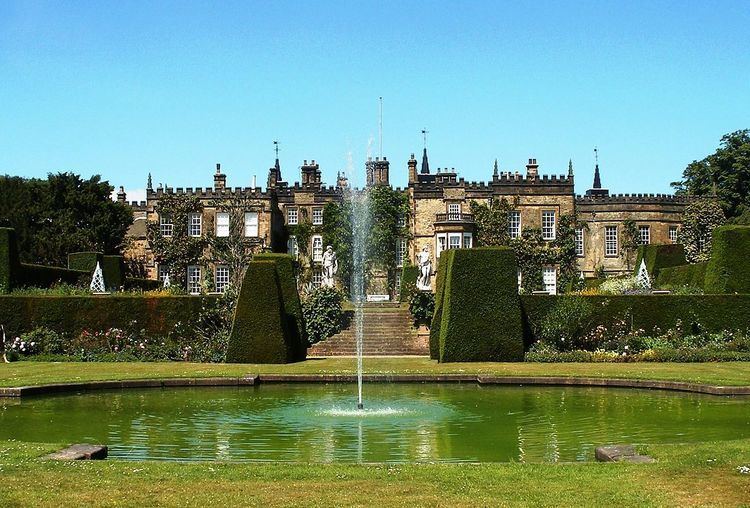Completed 1625 Phone +44 1246 432310 | Opened 1625 | |
 | ||
Hours Closed today MondayClosedTuesdayClosedWednesday10:30AM–4:30PMThursday10:30AM–4:30PMFriday10:30AM–4:30PMSaturday10:30AM–4:30PMSunday10:30AM–4:30PMSuggest an edit Similar Hardwick Hall, Bolsover Castle, Kedleston Hall, Stainsby Mill, Haddon Hall | ||
The gardens at renishaw hall 1
Renishaw Hall is a country house in Renishaw in the parish of Eckington in Derbyshire, England. It is a Grade I listed building and has been the home of the Sitwell family for over 350 years. The hall is located southeast of Sheffield, and north of Renishaw village, which is northeast of Chesterfield.
Contents
History
The house was built in 1625 by George Sitwell (1601–67) who, in 1653, was High Sheriff of Derbyshire. The Sitwell fortune was made as colliery owners and ironmasters from the 17th to the 20th centuries.
Substantial alterations and the addition of the west and east ranges were made to the building for Sir Sitwell Sitwell by Joseph Badger of Sheffield between 1793 and 1808 and further alterations were made in 1908 by Sir Edwin Lutyens. Renishaw had two owners between 1862 (when Sir George Sitwell succeeded in his infancy) and 1965, when Sir Osbert Sitwell gave the house to his nephew, Sir Reresby Sitwell, 7th Baronet. He was the eldest son of Sir Sacheverell Sitwell brother of Edith and Osbert and owned the hall from 1965 until 2009 when he bequeathed it to his daughter, Alexandra Hayward. The house and estate are separated from the Renishaw baronetcy for the first time in the family's history. Sir George Sitwell lives at Weston Hall.
Architecture
The house was built in stages and has an irregular plan. It is constructed in ashlar and coursed rubble coal measures sandstone with crenellated parapets with pinnacles. It has pitched slate roofs.
Gardens
The gardens, including an Italianate garden laid out by Sir George Sitwell (1860–1943), are open to the public. The hall is open for groups by private arrangement. The park is listed in the Register of Parks and Gardens of Special Historic Interest in England as Grade II*.
The 1980 BBC adaptation of Pride and Prejudice used footage shot at Renishaw Hall. D. H. Lawrence is said to have used the local village of Eckington and Renishaw Hall as inspiration for his novel Lady Chatterley's Lover.
